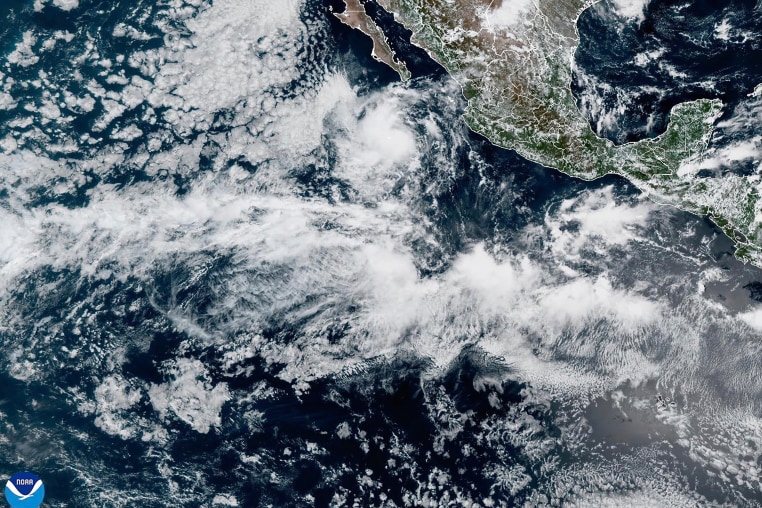A Study on the Influence of Natural Climate Variability on Extreme Flooding in Pakistan
A new study conducted by researchers at the Department of Energy’s Oak Ridge National Laboratory (ORNL) examines the impact of natural climate variability on extreme flooding events in Pakistan. The study, published in npj Climate and Atmospheric Science, analyzed over 40 years of data and found that natural climate variability accounts for more than 70% of observed monsoon variability and extremes in Pakistan during the 21st century. The study also suggests that climate change could potentially exacerbate the severity of these events.
Background
Pakistan has experienced frequent floods and droughts, but these events have become increasingly severe in recent decades. Unprecedented rainfall in 2010 and 2022 resulted in catastrophic floods and landslides, while a drought at the beginning of the 21st century led to widespread famine. To understand the role of climate change in these extreme weather events, it is crucial to quantify the influence of natural climate variability.
Research Methodology
The study, titled “The influence of natural variability on extreme monsoons in Pakistan,” focused on precipitation variability in West South Asia, which includes Pakistan and parts of India. This region is highly populated and experiences a strong monsoon season that contributes up to 70% of its annual rainfall within a few months. The research team analyzed detrended monthly monsoon precipitation data from West South Asia, as well as global land and ocean surface temperatures.
Findings
The analysis identified a combination of oceanic and atmospheric factors that impact precipitation in Pakistan. These factors include the El Niño-Southern Oscillation (ENSO) pattern of sea temperature changes in the Pacific Ocean, sea surface temperatures in the western Pacific and northern Arabian Sea, and internal atmospheric variability related to jet stream meandering. The study revealed that the influence of these climate factors has increased during the 21st century, possibly due to their increased strength, simultaneous occurrence, or a combination of both.
Implications
The co-occurrence of multiple climate forcings has a significant influence on precipitation variability in Pakistan. For instance, when a moderate ENSO occurs alongside other forcings like jet stream meandering, it can have a more substantial impact on precipitation. While natural climate variability explains over 70% of precipitation variability in Pakistan, climate change may indirectly contribute to the increased strength and co-occurrence of these forcings. Warmer global temperatures can lead to more atmospheric moisture and heavier rainfall when combined with other dynamic forcings. However, further research is needed to fully understand the impact of climate change on monsoons in Pakistan.
Conclusion
The study highlights the importance of evaluating the link between climate change and extreme weather events. While climate change may play an indirect role in shaping the characteristics of identified forcings, they are all part of naturally occurring variability in the atmosphere and oceans. The insights gained from this research can aid future investigations into surrounding regions and the development of better predictive models for extreme weather events.
Collaboration and Support
This study was a collaborative effort involving scientists from the National Oceanic and Atmospheric Administration, Stanford University, Northeastern University, Tufts University, Washington State University, Abdus Salam International Centre for Theoretical Physical, Italy, and the Indian Institute of Technology, Bombay. The research was supported by the Air Force Numerical Weather Modeling Program, the National Climate-Computing Research Center, and the Oak Ridge Leadership Computing Facility.
UT-Battelle manages ORNL for the Department of Energy’s Office of Science, which is the largest supporter of basic research in the physical sciences in the United States. The Office of Science is dedicated to addressing some of the most pressing challenges of our time. For more information, visit this link.
SDGs, Targets, and Indicators
| SDGs | Targets | Indicators |
|---|---|---|
| SDG 13: Climate Action | Target 13.1: Strengthen resilience and adaptive capacity to climate-related hazards and natural disasters | Indicator not mentioned in the article |
| Target 13.2: Integrate climate change measures into national policies, strategies, and planning | Indicator not mentioned in the article | |
| Target 13.3: Improve education, awareness-raising, and human and institutional capacity on climate change mitigation, adaptation, impact reduction, and early warning | Indicator not mentioned in the article | |
| Target 13.b: Promote mechanisms for raising capacity for effective climate change-related planning and management in least developed countries and small island developing States, including focusing on women, youth, and local and marginalized communities | Indicator not mentioned in the article | |
| SDG 15: Life on Land | Target 15.5: Take urgent and significant action to reduce the degradation of natural habitats, halt the loss of biodiversity, and protect and prevent the extinction of threatened species | Indicator not mentioned in the article |
1. Which SDGs are addressed or connected to the issues highlighted in the article?
- SDG 13: Climate Action
- SDG 15: Life on Land
2. What specific targets under those SDGs can be identified based on the article’s content?
- Target 13.1: Strengthen resilience and adaptive capacity to climate-related hazards and natural disasters
- Target 13.2: Integrate climate change measures into national policies, strategies, and planning
- Target 13.3: Improve education, awareness-raising, and human and institutional capacity on climate change mitigation, adaptation, impact reduction, and early warning
- Target 13.b: Promote mechanisms for raising capacity for effective climate change-related planning and management in least developed countries and small island developing States, including focusing on women, youth, and local and marginalized communities
- Target 15.5: Take urgent and significant action to reduce the degradation of natural habitats, halt the loss of biodiversity, and protect and prevent the extinction of threatened species
3. Are there any indicators mentioned or implied in the article that can be used to measure progress towards the identified targets?
No, the article does not mention or imply any specific indicators that can be used to measure progress towards the identified targets.
4. SDGs, Targets, and Indicators
| SDGs | Targets | Indicators |
|---|---|---|
| SDG 13: Climate Action | Target 13.1: Strengthen resilience and adaptive capacity to climate-related hazards and natural disasters | Indicator not mentioned in the article |
| Target 13.2: Integrate climate change measures into national policies, strategies, and planning | Indicator not mentioned in the article | |
| Target 13.3: Improve education, awareness-raising, and human and institutional capacity on climate change mitigation, adaptation, impact reduction, and early warning | Indicator not mentioned in the article | |
| Target 13.b: Promote mechanisms for raising capacity for effective climate change-related planning and management in least developed countries and small island developing States, including focusing on women, youth, and local and marginalized communities | Indicator not mentioned in the article | |
| SDG 15: Life on Land | Target 15.5: Take urgent and significant action to reduce the degradation of natural habitats, halt the loss of biodiversity, and protect and prevent the extinction of threatened species | Indicator not mentioned in the article |
Copyright: Dive into this article, curated with care by SDG Investors Inc. Our advanced AI technology searches through vast amounts of data to spotlight how we are all moving forward with the Sustainable Development Goals. While we own the rights to this content, we invite you to share it to help spread knowledge and spark action on the SDGs.
Fuente: preventionweb.net

Join us, as fellow seekers of change, on a transformative journey at https://sdgtalks.ai/welcome, where you can become a member and actively contribute to shaping a brighter future.






